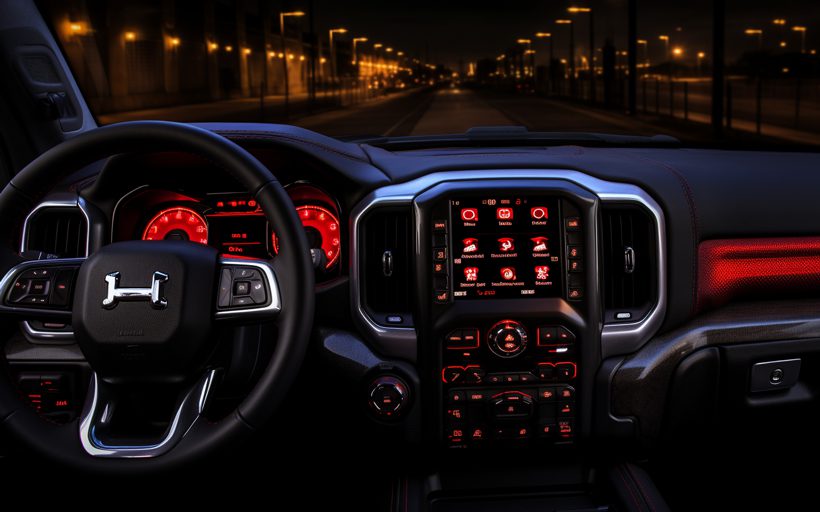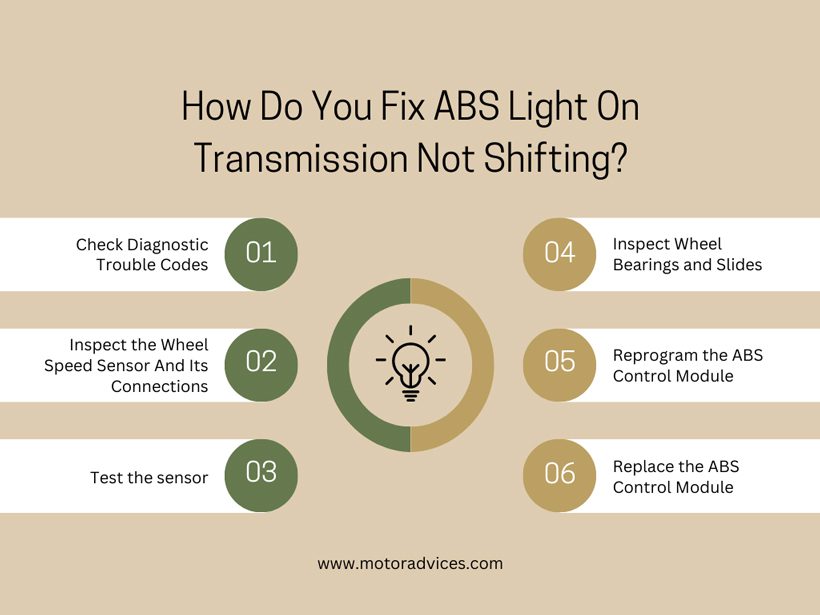What Causes ABS Light On Transmission Not Shifting?
The ABS light isn’t always an alarming sign for most car owners. But when that pairs with another problem, such as transmission not shifting or getting into limp mode, that will startle most.
So, what causes the ABS light on transmission not shifting? Most of the time, a fault with the wheel speed sensors is the culprit. Considering modern cars come with interconnected systems, the system goes awol when the ECU receives erroneous data from the WSS. That causes the ABS light to come on and the transmission to switch to limp mode.
The rest of the time, these two issues might not be related. You want to know what and where to check and fix the culprit of this issue? Stay tuned!
What Causes ABS Light On Transmission Not Shifting?

The points here might be causing your car’s ABS light to come on and transmission not to shift.
1. Problems With Your Wheel Sensor
The ABS protects your car wheels from locking or skidding. Typically, it relies on data supplied by the wheel speed sensors.
Modern cars come with interconnected computer systems. The ECU uses information from the wheel speed sensors to determine if the wheels rotate consistently, indicating the vehicle is performing properly.

When any of the wheel speed sensors fails, the ECU no longer sees a consistent speed for that wheel. The ECU puts the transmission into limp mode to prevent damage or accidents from this unknown issue. This limits the transmission to first gear and a slow speed as a fail-safe measure.
2. Unrelated ABS or Transmission Problems
While 99% of the time, the culprit of the ABS light coming on and transmission not shifting is the wheel sensor, there is a chance the two are unrelated. Typically, if the WSS causes these two, the ABS light will come first, and the car will move a distance with gears one and two.

Thereafter, it might switch back to one or stay at two even when you press the accelerator to the floor. That is a telltale sign the issue is connected. But if the switching starts at the word go, or the car switches high and low gears erratically, the two are unrelated, and you must diagnose them separately.
How Do You Fix ABS Light On Transmission Not Shifting?

The best way to fix the problem will require diagnosing the problem, causing the wheel sensor to fail. Of course, you can take your car to a technician if you’re uncomfortable doing it yourself. Here are the steps to fix the ABS light on transmission not shifting:
Step 1: Check Diagnostic Trouble Codes
The first step in diagnosing and repairing an ABS light issue due to a faulty wheel speed sensor is to check any stored diagnostic trouble codes (DTCs).
- Connect an OBD2 scanner to your vehicle’s diagnostic port and read the codes.
- The DTCs will identify which wheel speed sensor is having an issue. It may also indicate a possible cause, like a short circuit, open circuit, or low signal voltage. This information lets you know where to focus your diagnosis and repair.
Step 2: Inspect the Wheel Speed Sensor And Its Connections

Carefully inspect the suspect wheel speed sensor and its wiring for any issues that could cause the DTC:
- Dirt and debris buildup: Detach the wheel speed sensor from each wheel and look for buildup. Spray it with some WSS cleaner or WD40 to clear the dirt and debris.
- Physical damage: Look for cracks, corrosion, or missing parts on the sensor that could compromise its function.
- Loose connections: Check that the sensor is firmly connected to the wiring harness.
- Wiring damage: Inspect the wiring for cuts, abrasions, fraying, or corrosion. Clean or replace damaged wiring.
Step 3: Test the sensor
- With an assistant, lift the wheel off the ground and spin it by hand while watching the signal on the scan tool. The sensor should produce a proportional AC waveform that changes frequency as the wheel spins. If there is no waveform present, the sensor is likely malfunctioning.
- You can also test the sensor’s electrical connectivity using a multimeter. Set the meter to ohms and probe the sensor’s two wire leads. There should be continuity (a low reading showing a complete circuit). Any infinite or odd readings indicate a wiring issue.
If the sensor fails any of these tests, you have to replace it. Recheck the code reader and spin test after installing the new sensor to confirm the issue has been resolved. If the problem persists, continue with the fixing steps.
Step 4: Inspect Wheel Bearings and Slides

Bad wheel bearings or improperly adjusted/functioning brake caliper slides can result in vehicle conditions that trigger the ABS light.
- Jack up the vehicle and place it on the stands.
- Spin each wheel by hand to check for any roughness, noise, or vibration that would indicate a bad bearing.
- Apply light force to the top and sides of each tire and feel for any play or looseness in the bearings or hub assembly.
- For the slides, carefully inspect the dust boots/dust seals for tears, cracks, or other damage that would allow contaminants into the bearing assembly.
- Also, check the slides themselves for signs of excessive wear, corrosion, or roughness that make them no longer slide smoothly.
- Check all surfaces of the bearing races for pitting, flaking, or corrosion.
- While the wheel is off, also thoroughly inspect the dust boots again for tears or deterioration.
- Lightly lubricate the slides to ensure smooth bearing operation if no issues are found.
Step 5: Reprogram the ABS Control Module
After completing repairs, reprogram the ABS control module to clear any DTCs, erase fault memories, and relearn the new or repaired wheel speed sensors. This often requires specialized diagnostic tools and knowledge of the vehicle’s specific make/model, so a trained technician is recommended.
Here is a video showing how to clear DTCs:
Step 6: Replace the ABS Control Module
If a thorough full ABS diagnosis finds no other issues and you’re sure the two are related, replacing the ABS control module may resolve the issue. Here’s how to do that.
- You will need to disconnect the vehicle’s negative battery cable.
- Locate the ABS control module, usually under the passenger dashboard or behind the glove box. It will have several wiring harnesses and connectors attached.
- Remove any screws or retaining bolts holding the module in place. These vary by vehicle make and model. Also, disconnect all the wiring harnesses and electrical connectors from the ABS module.
- Remove any brackets or supports attaching the ABS module to the vehicle. Lift the module out of its location.
- Now, you can install the new ABS module and reconnect all the wiring harnesses and electrical connectors in the same configuration as the old module. Make sure all connectors are fully seated.
- Reinstall any retaining bolts or screws to securely mount the new ABS module in the vehicle.
- Reconnect the vehicle’s negative battery cable.
- Clear the ABS module codes and initialize the system – you might need a technician for this step as it’s more technical and requires a specialized kit. This resets the module for the new installation.
- Test the ABS to make sure it is functioning properly. You may need to take the vehicle for a test drive and slam on the brakes to fully activate the ABS.

FAQs
Here are the most frequently asked questions regarding an ABS light coming on with transmission not shifting properly:
The ABS light on and transmission does not shift repair cost depending on the specific issue but commonly ranges from $95 to $1,500, or a few thousand dollars more. This covers parts and labor for the repair.
Additional costs may include required transmission fluid and filter changes as part of the repair process.
No. When the car switches to limp mode, it sends a message to you to take your vehicle to the nearest car shop for a check-up.
Conclusion
When an ABS light comes on due to a faulty wheel speed sensor, the transmission may go into “limp mode” with limited performance. This is a fail-safe measure to protect drivetrain components. A damaged sensor, loose connections, wiring damage, or bad wheel bearings can cause the issue.
Fixing involves carefully inspecting the suspect sensor and wiring, checking for bearing issues and replacing faulty components. You must also clear diagnostic trouble codes and reprogram the ABS control module as needed. Replacing the ABS module should be a last resort.

